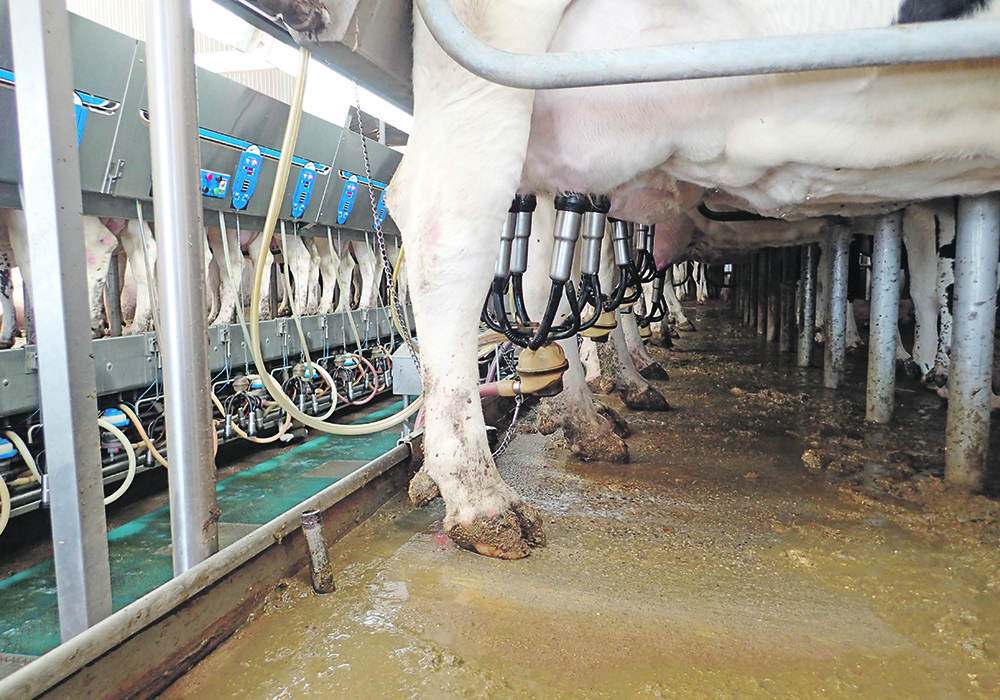Among the more weird and wonderful pathogens that infect animals are the poorly understood algae known as Prototheca (pronounced proto-thee-ca).
At about 20 micrometres in diameter (about half the width of a human hair), these are tiny beings. Related to green algae, Prototheca have lost their chlorophyll and thus have no ability to produce energy from light through photosynthesis.
Instead, these colourless algae have adopted a more nefarious lifestyle. They depend on other organisms for their energy and to sustain life. Infections with this pathogen in people and animals have been identified worldwide, including in Canada.
Read Also

Feds propose overhaul of chronic wasting disease control program
Chronic Wasting disease control program getting updated by Canadian Food Inspection Agency with feedback encouraged from producers.
Infections in any species are rare. In people, infections tend to occur in the skin, lungs and intestines. Most people affected have compromised immune systems, such as individuals receiving organ or tissue transplants, and chemotherapy for cancer.
The most common form of this disease occurs in dairy cattle. The algae enter the mammary gland through the teats and can be introduced when medications are injected or if environmental hygiene is poor.
Prototheca can spread between cows on a farm, including through contaminated milking equipment. Dairy cattle with this infection experience inflammation of the mammary gland, known as mastitis. As a result, there is decreased milk production and quality. Milk may be discoloured, watery and contain floating bits of material.
A Canadian study identified the pathogen in approximately six percent of bulk milk tank samples, making it important but rare compared to other mastitis-causing pathogens, such as Staphylococcus aureus, which was present in nearly half of samples in the same study. Milk can be tested by culturing the algae or by molecular tests at a diagnostic laboratory.
In dogs, it is associated with infections in several body systems, including the skin, intestines, eyes, lungs, brain and liver. Most often, dogs develop severe, bloody diarrhea. When dogs develop infections throughout the body, it is usually associated with a compromised immune system, such as infection with a virus like canine distemper.
Cats are prone to severe skin and associated soft tissue infections with Prototheca, usually because of skin wounds.
A range of other species, including goats, horses and wildlife, have been diagnosed with Prototheca infections, but these are far less common than those in cattle, dogs and cats.
There are limited treatment options. Infected dogs and cats may be treated by surgery and some medications, although the prognosis is poor. For cattle with mastitis, many cows are culled from the herd. Environmental and mammary gland treatment hygiene are the main control measures.
Prototheca are present in a variety of environments, where they can be a source of infection for people and animals. They are classified as an opportunistic pathogen, which means it usually takes some type of change in the animal for an infection to occur. Water, plants, soil, feces, mud and flooring can all harbour the organism. And it survives well in even adverse environmental conditions that kill other pathogens.
The diagnosis includes microscopic examination of tissues. The organism is often visible using a microscope in the infected tissues that are collected by biopsy or during an autopsy. The algae are accompanied by cell death and inflammation. The infection is confirmed with molecular tests or culturing the organism in a laboratory.
When we think of algae and its impact on animal health, Prototheca are an outlier.
By far the most common manifestation of algae-associated disease is when animals consume fatal toxins produced by algal blooms. Blue-green algae overgrow in stagnant water bodies during the heat of the summer on the Prairies. Algal blooms also occur in the ocean. In both types, algae produce toxins that animals consume, leading to illness.
In cases of Prototheca infection, the algae directly infect the body rather than produce disease-causing toxins.
Dr. Jamie Rothenburger, DVM, MVetSc,PhD, DACVP, is a veterinarian who practices pathology and is an assistant professor at the University of Calgary’s Faculty of Veterinary Medicine. Twitter: @JRothenburger















